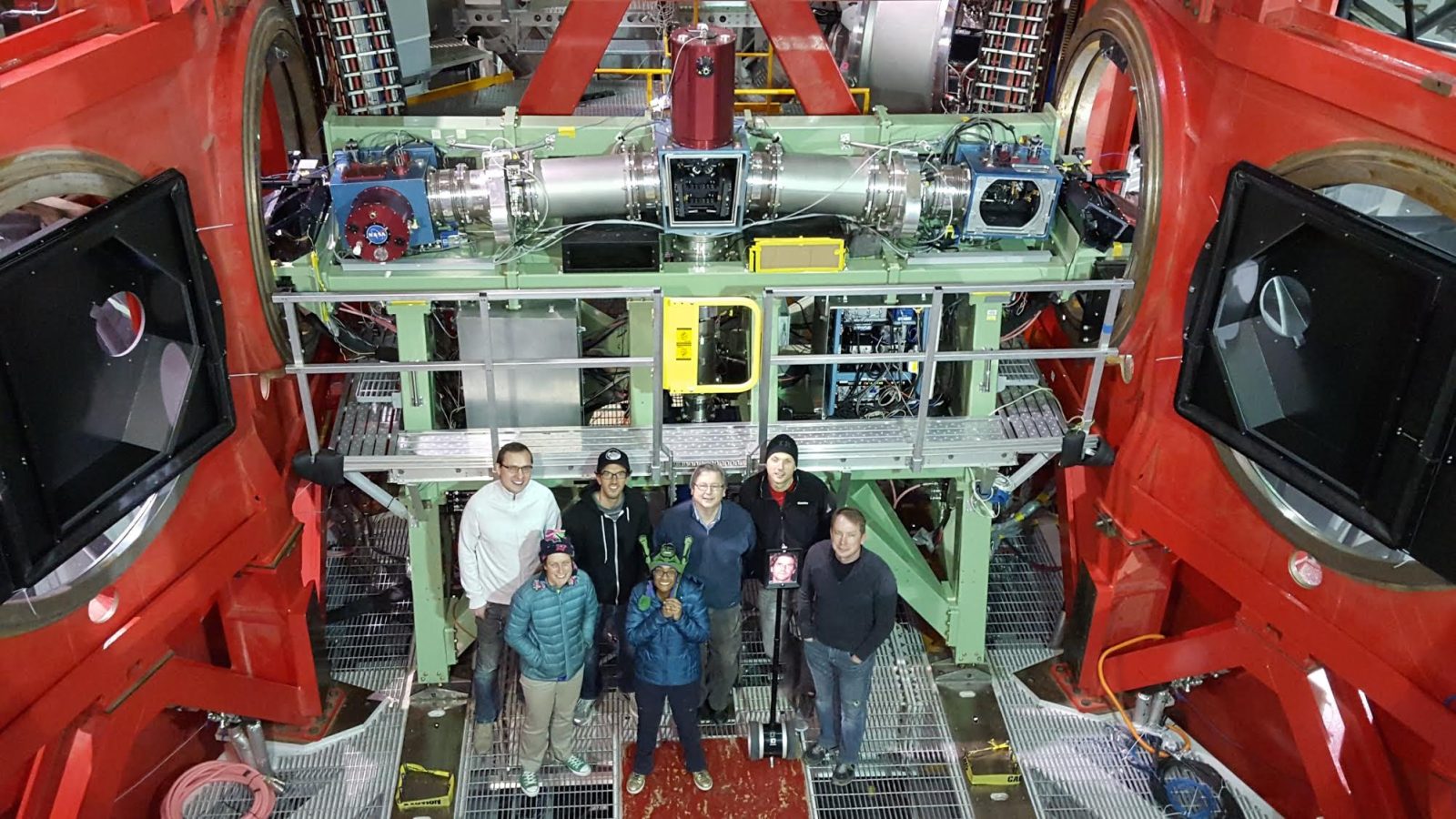LBTI
The Large Binocular Telescope Interferometer (LBTI) is a high spatial resolution, low thermal background instrument making use of both 8.4m apertures of the LBT. It is designed for nulling interferometry using the 14.4m (center-to-center) baseline of the LBT, Fizeau imaging interferometry using the 22.8m (edge-to-edge) effective aperture of the LBT, and adaptive optics imaging using the two apertures separately. The system is comprised of a near-infrared phasing camera and the two thermal infrared science cameras LMIRcam (1-5μm) and NOMIC 8-13μm. LBTI is located at the f/15 bent Gregorian focal stations.
Available Modes
LBTI is currently a strategic instrument, and is being made available to observers at any of the LBT partner institutions via collaboration with the LBTI and instrument mode teams. The NALES IFU is a PI instrument integrated into the LBTI.PI’s interested in using the LBTI must contact lbtipi@lbto.org prior to proposal submission.
| Observing Mode | LMIRcam | NOMIC | Comments |
|---|---|---|---|
| Single Sided AO-imaging | ✓ | ✓ | Background limited imaging or for those that want to take advantage of the full detector array. For this mode a cold stop is placed to block the light from either the left or right telescope. |
| Double Sided non-Overlapped AO-imaging | ✓ | ✓ | Speckle limited imaging. Dual AO images acquired placed side by side separated by ~half the width of the FoV. |
| Single Sided Non-Redundant Mask (NRM) Imaging | ✓ | 12 and 24 hole masks available. | |
| ALES Imaging | ✓ | ALES (Arizona Lenslet for Exoplanet Spectroscopy) is an AO-fed thermal infrared integral field spectrograph. Available with 2.2-3.7μm, 2.8-4.2μm, 3.0-5.0μm, and 3.1-3.5μm prisms, but only the 2.8-4.2μm mode is fully commissioned. ALES IFU is a PI instrument. | |
| vAPP coronagraphy | ✓ | Vector Apodizing Phase Plate coronagraphy, used for both single- and double-aperture non-overlapped imaging. | |
| ALES + vAPP coronagraphy | ✓ | Combination of ALES and vAPP coronagraphy for further enhanced contrast and spectral information. | |
| Nulling interferometry | ✓ | Bright star light is suppressed through destructive interferometry at the 14.4m center-to-center baseline. This mode is used for LBTI’s core exozodiacal dust observations (HOSTS survey). Phase cam is utilized for phase and tip-tilt control. | |
| Shared Risk – experimental or expert users only | |||
| Double Sided Overlapped AO-imaging | ✓ | ✓ | Utilizes full collecting area of both telescopes at the cost of PSF stability. |
| Wall-Eyed Imaging | ✓ | Simultaneously image a science target and calibrator separated by <2arcmin, on to a single detector allowing for accurate differential photometry. | |
| AGPM coronagraphy | ✓ | Annular Groove Phase Mask coronagraphy, available for single-sided and double-sided imaging with one L band optimized and one L+M band optimized mask. | |
| ALES +AGPM coronography | ✓ | Combination of ALES and AGPM coronagraphy for further enhanced contrast and spectral information. | |
| Fizeau Imaging | ✓ | ✓ | Interferometric imaging exploiting the LBT’s full 22.7m edge-to-edge baseline. Phase controlled interferometry is possible for sufficiently bright and point-like sources, and open-loop interferometry is possible if the source is not suitable for fringe tracking. |
| Fizeau Spectrointerferometry | ✓ | Diffraction limited spectroscopy with L & M band grisms which access the spatial information out to the LBT’s full 22.7m edge-to-edge baseline. | |
| Double Sided NRM Imaging | ✓ | Phased controlled NRM imaging. 12 and 24 hole masks available, as well as annular mask. | |
| Fizeau + ALES | ✓ | 23 m resolution integral field spectroscopy. | |
The following webpages will focus on supported modes, although there will be some brief mentions of the experimental or expert modes. Expert or experimental modes require the PI expertise for planning, execution, and reduction.Modes and strategies are discussed here.


